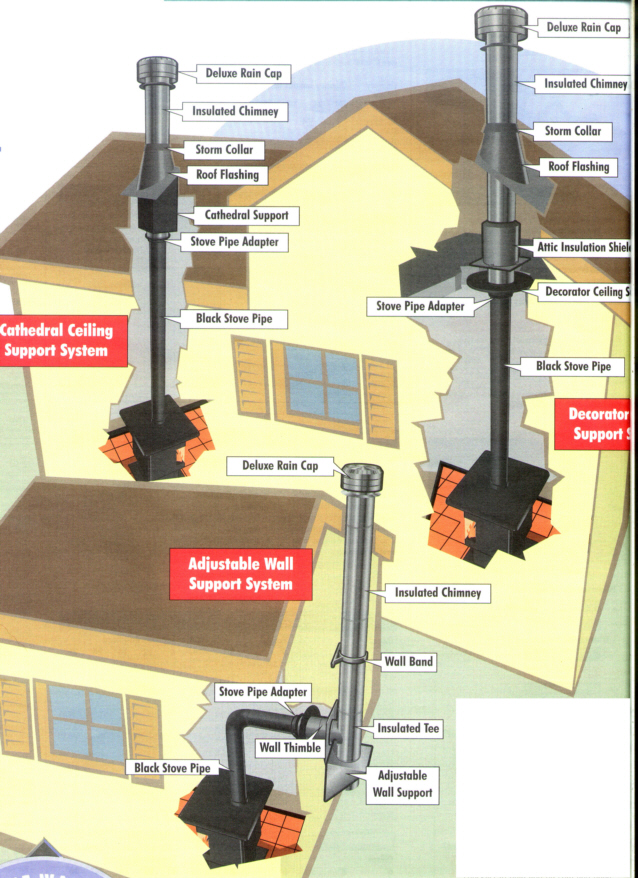With the changing landscape of technology, regulations for installing wood stoves are continually adapting and evolving to ensure safety. In this blog article, we’ll take a look at What are Regulations for Wood Stove Installation in 2023. We’ll explore the most recent trends in terms of safety requirements, and how you can best prepare yourself when it comes to installing a wood-burning stove in the future.
What are Regulations for Wood Stove Installation in 2023
In 2023, the U.S. Environmental Protection Agency (EPA) released new regulations for wood stove installation in an effort to reduce air pollution and protect public health.
The changes come as part of the EPA’s ongoing review of the National Ambient Air Quality Standards (NAAQS) for particulate matter (PM), which includes PM2.5, or fine particles that can be inhaled deep into the lungs and cause health problems.
The new regulations require that all newly installed wood stoves meet stricter emission limits, and that they be tested and certified by the EPA before they can be sold.
Wood stoves that do not meet the new standards will not be allowed to be sold in the United States after December 31, 2023.
The changes to the regulations are expected to result in a significant reduction in emissions of PM2.5 from wood stoves, which will help improve air quality and protect public health.
Introduction to Wood Stove Installation
There are many things to consider when installing a wood stove, but the most important thing is to make sure that it is installed according to regulations. These regulations vary from state to state, so it is important to check with your local authorities before installation.
In general, wood stoves must be installed on a non-combustible surface, such as concrete or brick. The stove must also be connected to a chimney that meets code requirements. The flue pipe that connects the stove to the chimney must be made of non-combustible material, such as stainless steel.
It is also important to make sure that the area around the wood stove is clear of combustible materials. This includes carpets, drapes, and furniture. There should also be a fireproof hearth mat in front of the stove.
Finally, always follow the manufacturer’s instructions when installing a wood stove. This will help ensure that the stove is installed correctly and safely.
Local and State Regulations for Wood Stove Installation
Most states will require a permit for any type of wood burning appliance, including a wood stove. The process for obtaining a permit varies from state to state, but generally involves filling out an application and paying a fee.
In some cases, you may also need to have your plans approved by the building department before you can begin work.
Once you have obtained the necessary permits, there are a few general guidelines that must be followed when installing a wood stove. The most important thing to remember is that the stove must be properly vented to the outside.
This means that there must be a way for the smoke and fumes to escape from the house, without causing any danger to those inside.
Another important consideration is the location of the stove. It should not be placed near any flammable materials, such as curtains or furniture. It should also be located in an area where it will not block any exits in case of an emergency.
Once the stove is installed, it is important to have it regularly inspected by a qualified technician. This will ensure that it is operating safely and efficiently.
Environmental Considerations for Installing a Wood Stove
When installing a wood stove, there are a few environmental considerations to take into account. First, make sure that the wood stove is EPA-certified. This will ensure that it meets strict emissions standards and will not have a negative impact on air quality. Second, consider the location of the wood stove.
It should be installed in a well-ventilated area to prevent fumes from building up. Third, use dry, seasoned wood in the stove to avoid creating smoke and pollution. Finally, have the chimney cleaned regularly to prevent soot from accumulating and affecting air quality.
Safety Considerations for Installing a Wood Stove
First, always use caution when working with tools and around open flames. Be sure to wear appropriate clothing and protective gear, such as gloves and eye protection.
Second, take care to properly position the wood stove in the room. It should be placed on a level surface, away from flammable materials such as curtains or furniture. The stove should also be positioned so that the flue pipe can be properly installed according to code.
Third, follow the manufacturer’s instructions carefully when installing the wood stove and connecting the flue pipe. Incorrect installation can pose a serious fire hazard.
Fourth, have the chimney inspected and cleaned before using the wood stove for the first time. A build-up of soot or creosote in the chimney can cause a dangerous chimney fire.
Finally, always use dry, seasoned wood in your wood stove. Wet or green wood will produce more smoke and creosote buildup in the chimney.
Conclusion
Wood stoves have a long and proud tradition in providing heat and comfort to homes. With the right regulations, 2023 is set to be an exciting year for wood stove owners. The implementation of these regulations will ensure that your wood stove is safe to use and helps you get the most out of it while reducing air pollution. Make sure you understand “What are Regulations for Wood Stove Installation in 2023” so that you can enjoy your wood stove without any worries or risks!

